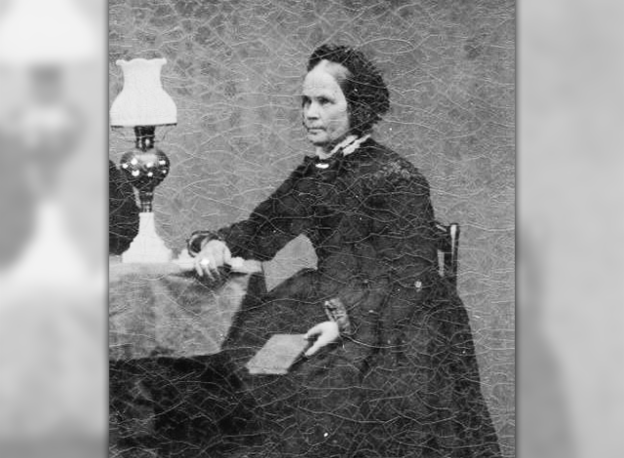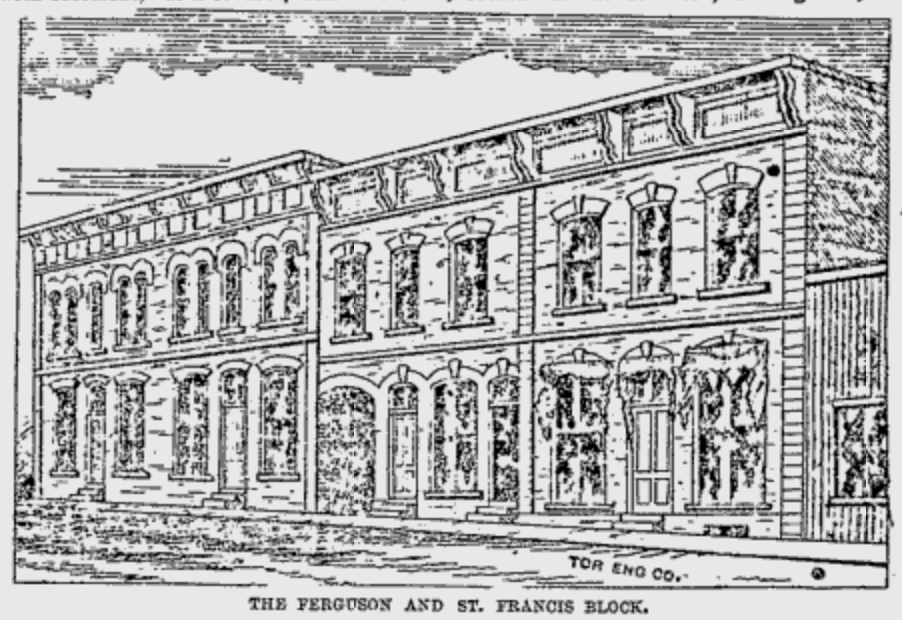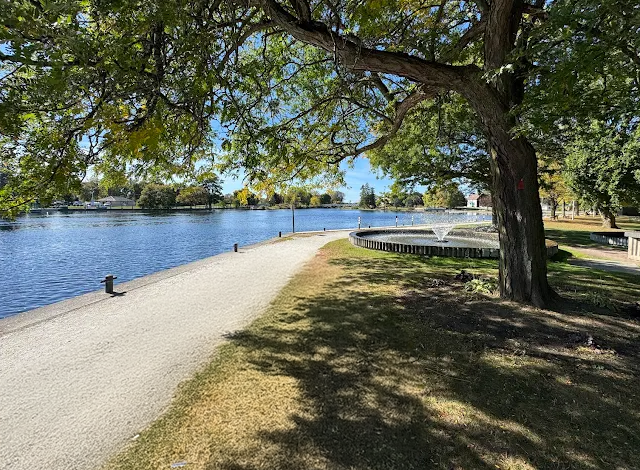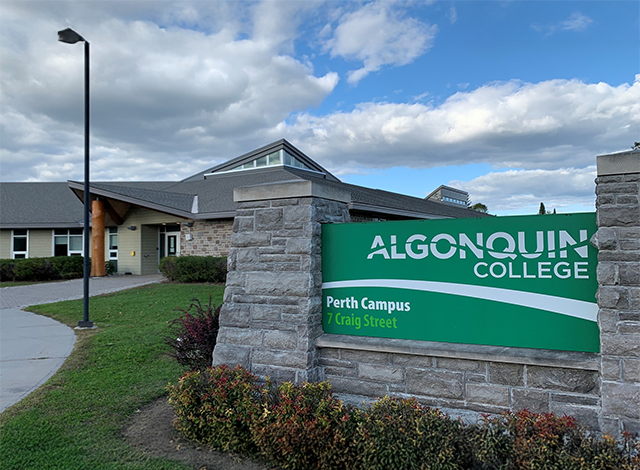Heiress to a fortune
In 1861, fourteen-year-old Anna Marie Gould (1847-1895) became heiress to William Simpson, the largest landowner in Smiths Falls. At the age of seventeen, she inherited a portion of her father’s (Jason Gould’s) fortune which included a substantial amount of Smiths Falls property. Anna was a very wealthy woman when she married Postmaster, and later Mayor of Smiths Falls, Duncan Alexander Fergusson (1843-1914), on July 22, 1875.
Duncan was born in the township of Montague, county of Lanark on July 15, 1843. In 1869, at the age of twenty-six with a grammar school education, he launched his business in Smiths Falls as the senior member of the mercantile firm of Fergusson & Gilroy. Within three years, his offices were relocated to what Toronto’s The Globe newspaper described as “the largest and most pretentious business structure of the town”. The Fergusson and St. Francis Block was erected in two installments: the southern Fergusson portion in 1872 and the northern St. Francis section in 1876. The Globe’s article mentions that “it was built of blue limestone, faced with white freestone, two and a half stories high with iron roof, and has a frontage of 120 feet on Beckwith, and 45 feet on William Street. The lower storey of the entire block is devoted to mercantile purposes, with the exception of the post office, which occupies 20 x 45 feet of the Fergusson section. The upper storey is occupied mainly by secret societies as lodge rooms. In the southern, or Fergusson section are the Loyal Orange Lodge, the Orange Young Britons’ Lodge and Garnet Lodge Ancient Order of United Workmen…”
1875 was a big year for Duncan. He was appointed Postmaster of Smiths Falls and married Anna Marie Gould. Over the next eleven years, they would have five children: Laura, John Beckwith, Dr. Rosslyn Montague, William Simpson, and James Henry. Evidence of Anna’s wealth is apparent in the massive and spectacular white brick house they built in the late 1870s or early 1880s. The property is located at 30 Mill Street, (later Maple Avenue) corner of Russell, in Smiths Falls. The historian Glenn Lockwood describes it as “full-blown late Victorian whimsy”.
Duncan began his 40-year reign as Postmaster working out of the Fergusson and St. Francis Block, where he was assisted by his brother. After two years, he relinquished his commercial pursuits and devoted himself exclusively to his official duties. He was a member of the school board for several years and represented Dufferin ward in the town council for two terms. Duncan was the first president of the Smiths Falls Board of Trade. The organization still operates today as the Smiths Falls Chamber of Commerce, although the name was changed based on the suggestion of his son, Dr. Ross Fergusson. The relationships he built as a postmaster, combined with his wife Anna’s wealth, led him to become elected Mayor in 1887. He held this position for three consecutive terms.
While Duncan was campaigning against Ogle Carss for the position of Mayor, he offered strong support for the temperance movement. Both newspapers ran regular temperance columns at the time. The anti-drink women later learned to their shock and dismay that, on one occasion, Mayor Fergusson had failed to greet members of the Dairyman Association because he was too intoxicated, or not “presentable”, in his own words. Duncan was not the only Smiths Falls politician who appealed to the growing temperance lobby, while ignoring the illegal smuggling and selling of liquor that went on. Nor was he the first politician to indulge in the occasional tipple while touting the virtues of sobriety.
An 1858 copy of the “The Municipal Manual” inscribed with “Municipality of the Village of Smiths Falls, April 27th, 1866” outlines the duties of a mayor at the time. The manual makes it clear that the “Heads” of all municipal councils were deemed “ex officio Justices of the Peace” for the purposes of enforcing all local municipal by-laws. In addition, the Council of any Town and City were required to “establish therein a Police Office” where in the absence of a Police Magistrate the Mayor of a Town or City “… shall attend such police office daily for the disposal of the business brought before him as a Justice of the Peace….”. Evidence of this can be found in numerous press clippings, including an 1887 edition of The Kingston Whig-Standard which wrote that “A man by the name of McGlade was fined $5 plus costs for striking one of the Salvation Army Officers by Mayor Fergusson”.
On May 2, 1888, the Ferguson family were almost asphyxiated by coal gas, according to the The Kingston Whig-Standard. Shortly after rising, the domestic servant collapsed, as did Anna. The three children were rendered unconscious as well. Fortunately, Duncan was able to “overcome the effects of the poison and hurried for assistance.”
Anna and Duncan Fergusson owned a wealth of Smiths Falls property, and on July 7, 1891, they sold lot 5 and 42 on the West side of Brockville Street in Block F to architect George Thomas Martin for $300. Martin designed the Keyhole House and had it built at this location by 1893.
Anna died on May 5, 1895, at the age of 47. Average life expectancy at the time was 50. Duncan died at his home of pneumonia at the age of 71, on May 8, 1914. He was survived by three sons and a daughter. The funeral was largely attended and took place from his residence on Church Street; he was buried at Hillcrest Cemetery. In November 1971, a faulty light fixture caused a fire which destroyed most of the magnificent Fergusson and St. Francis Block on Beckwith Street where Duncan had operated the town post office. A portion of the original façade remains where Gemmell’s Flowers is currently located.
Ted & Marion Outerbridge are currently restoring a Smiths Falls heritage home built in 1893. They are also being swept away by local history & mystery. You can follow them on Instagram, Facebook, and TikTok @thekeyholehouse or email ted@tedouterbridge.com.
















